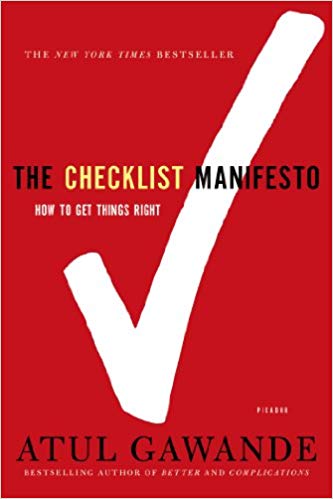

This article is an excerpt from the Shortform summary of "The Checklist Manifesto" by Atul Gawande. Shortform has the world's best summaries of books you should be reading.
Like this article? Sign up for a free trial here .
Brenda Zimmerman and Sholom Glouberman, who study complexity, defined three kinds of problems: simple, complicated, and complex. What’s the difference? Particularly, what’s the difference between complicated problems and complex problems?
A complex problem is a problem that has many variables and for which the outcome is uncertain. An example of a complex problem is raising a child. You learn from raising one child, but the next child may require a different approach.
We’ll look at the nature of complex problems, how they differ from complicated problems, and how to solve complex problems in the workplace.
From Simple to Complex Problems
The successful experiences of using checklists in aviation decades ago suggest they could be applied widely. They protect even the most experienced from making mistakes in a whole range of tasks. They provide a mental safety net against typical human lapses in memory, focus, and attention to detail.
- Simple Problem: An example of a simple problem is baking a cake from a mix — there’s a recipe and a few techniques, but once you’ve learned them, following the recipe usually works.
- Complicated Problem: An example of a complicated problem is sending a rocket to the moon. Complicated problems can be broken down into smaller problems. Solving the problem involves many people, teams, and specialists. Unexpected issues pop up, but you can learn, repeat the process, and perfect it. Timing and coordination are key.
- Complex Problem: An example of a complex problem is raising a child. Every child is unique. You learn from raising one child, but the next child may require a different approach. With complex problems like raising a child, the outcome is uncertain. Yet it’s possible to raise a child successfully.
In classifying the three problems described so far in this book — the bomber crash of 1935, the issue of central line infections, and the rescue of a drowning victim — the key problem and solution in each case were simple:
- To avoid crashing the bomber, focus on the rudder and elevator controls.
- To reduce central line infections, maintain sterility.
- To saving a drowning victim, be ready to perform a cardiac bypass
All could be resolved by using a simple tool to compel the needed behavior — a checklist. We’re constantly confronted with similar simple problems that can be mitigated by checklists — for instance, a nurse’s failure to wear a mask while putting in a central line or a surgeon’s failure to recall that one cause of a cardiac arrest could be a potassium overdose.
But can checklists be used to address complicated or complex problems, such as ICU work, where there are many tasks performed by multiple people, dealing with individual patients with individual and complex problems? Medicine encompasses all three types of problems — simple, complicated, and complex. It’s important to get basic things right, while allowing skill, judgment, and ability to react to the unexpected.
The medical profession could learn from the construction industry, which handles the design and construction of huge and complicated structures with the help of sophisticated checklists addressing the full range of problems.
The Demise of the Master Builder
Let’s look at an example of how checklists can solve complex problems.
People used to hire master builders, who designed, engineered, and oversaw the construction of large and small projects from start to finish. For instance, master builders built Notre Dame and the U.S. Capitol building.
However, by the mid-20th-century master builders became obsolete because one person alone couldn’t master the advances occurring at every stage of the construction process. Architectural design and engineering design became separate specialties. Other specialties and subspecialties developed. Builders split further into areas of expertise such as finish carpenters and tower crane operators. Major projects now involve 16 different trades and hundreds of workers who must do their jobs in coordination with others.
The construction process is orchestrated using sophisticated schedules and checkpoints that enforce roles, communication, and follow-through. The simple act of building has become a complex problem. The major advance in the industry over the last few decades has been perfecting this process of tracking and communication.
To manage increased complexity, the entire construction industry was forced to evolve. However, much of medicine is still structured like the master-builder era — with a lone physician executing all of a patient’s care — even though times have changed to the extent that a third of patients have at least 10 doctors involved in their care by the last year of their life. As a result, care can be uncoordinated and subject to error.
In construction, failure isn’t an option. Massive structures must stand up straight and withstand all kinds of pressures and potential disasters such as fires and earthquakes.
Managing Complex Problems: The Rise of the Construction Checklist
To see how managing complex problems works, the author visited the Russian Wharf project in Boston while it was under construction in 2006. The project, completed in 2011, consisted of a high-rise, glass-and-steel waterfront building that incorporated commercial and residential space while retaining historic aspects of the original building on the site.
The nerve center for the project was a room where the construction schedule, essentially a huge checklist, was posted on the wall. This consisted of multiple, large sheets of paper containing numerous computer-created, color-coded lists. They listed every task by order and date — for instance concrete pouring and steel delivery for each story were scheduled at certain times. As each task was completed, the project executive noted it on the schedule and printed out the next phase of work. The construction schedule was designed to build the project in layers, using day-by-day checks to ensure that the knowledge and skills of hundreds of people were correctly applied at the right time and place.
Medicine and the Explosion of Complexity
Medicine is another field that’s continually dealing with complex problems. In trying to do the right things, the challenge of the 21st century is ineptitude, rather than ignorance. It used to be the reverse. For most of human history, we struggled with scientific ignorance. We didn’t understand how things worked or what caused illnesses and how to treat them.
For instance, doctors didn’t know how to treat heart attacks or how to prevent them as recently as the 1950s. Patients were prescribed morphine and bed rest and, if they survived, they lived as invalids. Today, however, we have a host of treatments and procedures that save lives and limit heart damage. Also, we can prevent many heart attacks because we understand and can mitigate the risks of high blood pressure, cholesterol, smoking, and diabetes.
But while science has increased our knowledge dramatically, we still often fail. The reason isn’t lack of money, malpractice, or government or insurance issues. It’s the enormous and ever-increasing complexity of many fields today. We struggle to apply knowledge the right way at the right moment. Under pressure, we make simple mistakes and overlook the obvious.
For instance, authorities at all levels make numerous mistakes when disasters strike. Attorneys make mistakes in complex legal cases, most commonly administrative errors. We have foreign intelligence failures, cascading banking industry failures, and software design flaws that compromise the personal information of millions of people. Deciding the right treatment among the many options for a heart attack patient can be extremely difficult. Each one involves complexities and pitfalls.
Getting the right thing done is a challenge too. From research, we know that heart attack patients who will benefit from cardiac balloon therapy should have it within 90 minutes of arriving at a hospital. After that, survival rates drop. But a 2006 study showed less than a 50 percent likelihood that a medical staff could get everything done that needed to be done in less than 90 minutes. Similarly, at least 30 percent of stroke patients get insufficient care, and the same is true for 45 percent of asthma patients and 60 percent of pneumonia patients. Knowing the right steps and trying hard aren’t enough.
A Different Strategy
Those on the receiving end of such failures naturally react with outrage. We can forgive ignorance and accept that others tried their best with what they knew. But when the experts know what to do and fail to do it, we’re likely to blame gross negligence, incompetence, or heartlessness. This ignores the complexity of many jobs today, and the complex problems that come with them.
The problem is that across numerous professions — medicine, engineering, finance, business, government — the level and complexity of our knowledge is more than any individual can apply correctly in all circumstances. Knowledge has saved and also overwhelmed us.
Most professions, especially medicine, have traditionally responded to failure by requiring more training and experience. Training of medical personnel, police, engineers, and others is more extensive than ever. Due to increased training requirements, doctors don’t practice independently until their mid-thirties. But while training and experience are important, expertise doesn’t address human fallibility. We need a different strategy for preventing failure that takes advantage of knowledge and experience but also compensates for human flaws.
The solution is a simple checklist.
———End of Preview———

Like what you just read? Read the rest of the world's best summary of "The Checklist Manifesto" at Shortform . Learn the book's critical concepts in 20 minutes or less .
Here's what you'll find in our full The Checklist Manifesto summary :
- How checklists save millions of lives in healthcare and flights
- The two types of checklists that matter
- How to create your own revolutionary checklist






